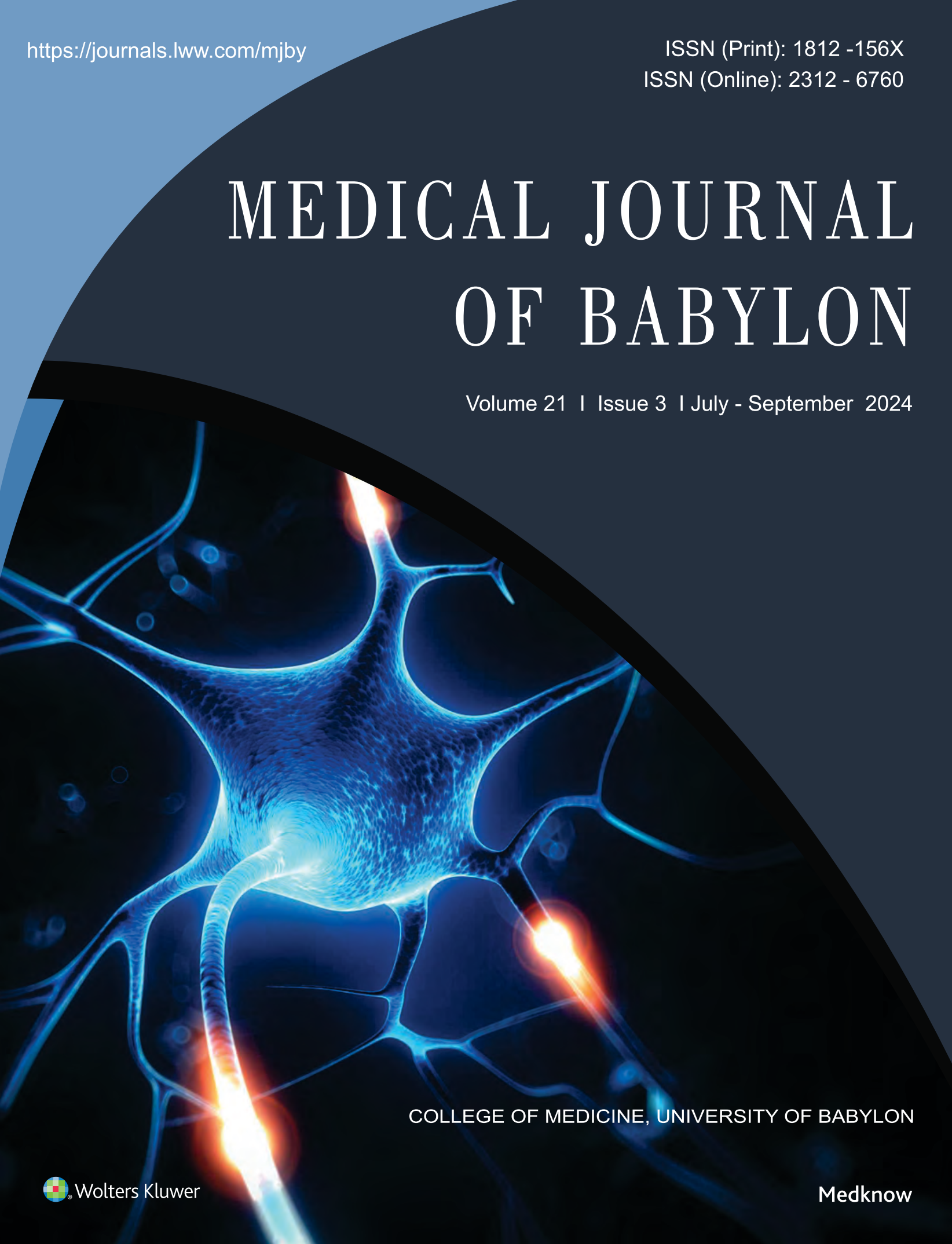Abstract
Abstract
The present study was conducted on oral squamous cell carcinoma(OSCC)which is the most common oral malignancies
with main objective of showing the expression of p63 in OSCC.
This study comprised a total of (93) patients diagnosed as OSCC.,(62)males and (31) femalesThe cases include: well
differentiated SCC.(32)cases, moderately differentiated SCC.(40) and poorly differentiated SCC.(21)cases.The
expression of p63 gene was carried out on 4μm tumor sections using Immuno histochemical staining of p63 antibody.
The data demonstrated the mean percentage expression of p63 in well, moderately and poorly differentiated
SCC.Results showed that p63 expression was observed as positive diffuse reactivity in(38) cases (40.86%), positive
basal Para basal reactivity in (19)cases (20.34%), positive basal reactivity in (34) cases (36.56%) and negative reactivity
in(2)cases (2.15%)
Results also showed p63 expression was increased in high grade tumors of size >1.5cm and metastatic dissemination of
lymph nodes with diffuse and basal Para basal pattern of distribution.Scoring analysis showed more than 50% of cases
present with score 26-50% of expression.
In conclusion , these data found that the P63 nuclear positivity was extended from the basal- Para basal layers to the
whole epithelial layers in both moderately and poorly differentiated tumors , and P63 staining was more uniform and
homogenous for the well- differentiated tumor areas.
The present study was conducted on oral squamous cell carcinoma(OSCC)which is the most common oral malignancies
with main objective of showing the expression of p63 in OSCC.
This study comprised a total of (93) patients diagnosed as OSCC.,(62)males and (31) femalesThe cases include: well
differentiated SCC.(32)cases, moderately differentiated SCC.(40) and poorly differentiated SCC.(21)cases.The
expression of p63 gene was carried out on 4μm tumor sections using Immuno histochemical staining of p63 antibody.
The data demonstrated the mean percentage expression of p63 in well, moderately and poorly differentiated
SCC.Results showed that p63 expression was observed as positive diffuse reactivity in(38) cases (40.86%), positive
basal Para basal reactivity in (19)cases (20.34%), positive basal reactivity in (34) cases (36.56%) and negative reactivity
in(2)cases (2.15%)
Results also showed p63 expression was increased in high grade tumors of size >1.5cm and metastatic dissemination of
lymph nodes with diffuse and basal Para basal pattern of distribution.Scoring analysis showed more than 50% of cases
present with score 26-50% of expression.
In conclusion , these data found that the P63 nuclear positivity was extended from the basal- Para basal layers to the
whole epithelial layers in both moderately and poorly differentiated tumors , and P63 staining was more uniform and
homogenous for the well- differentiated tumor areas.
